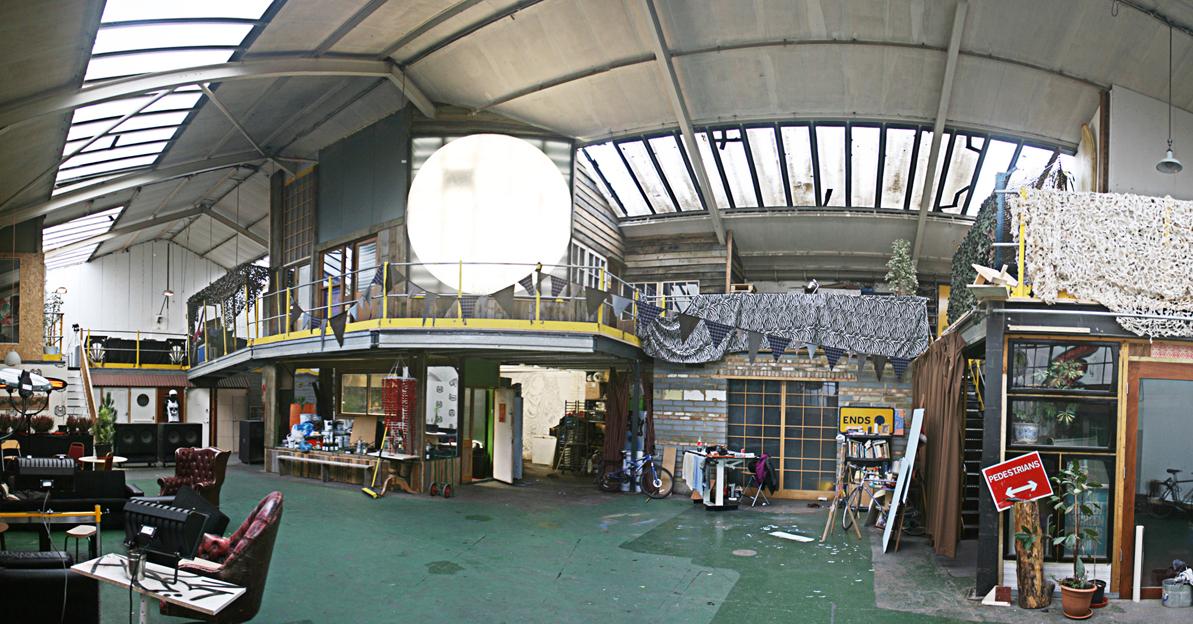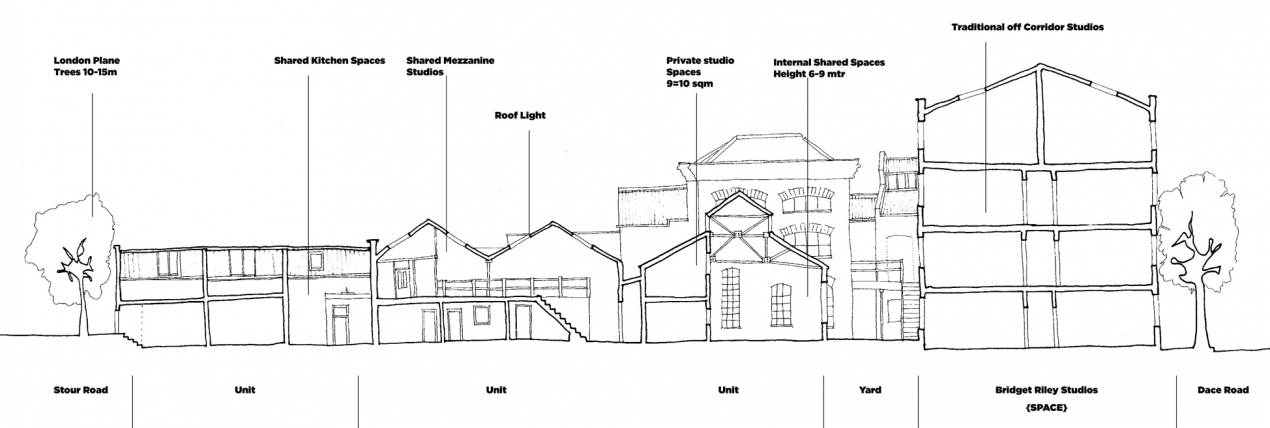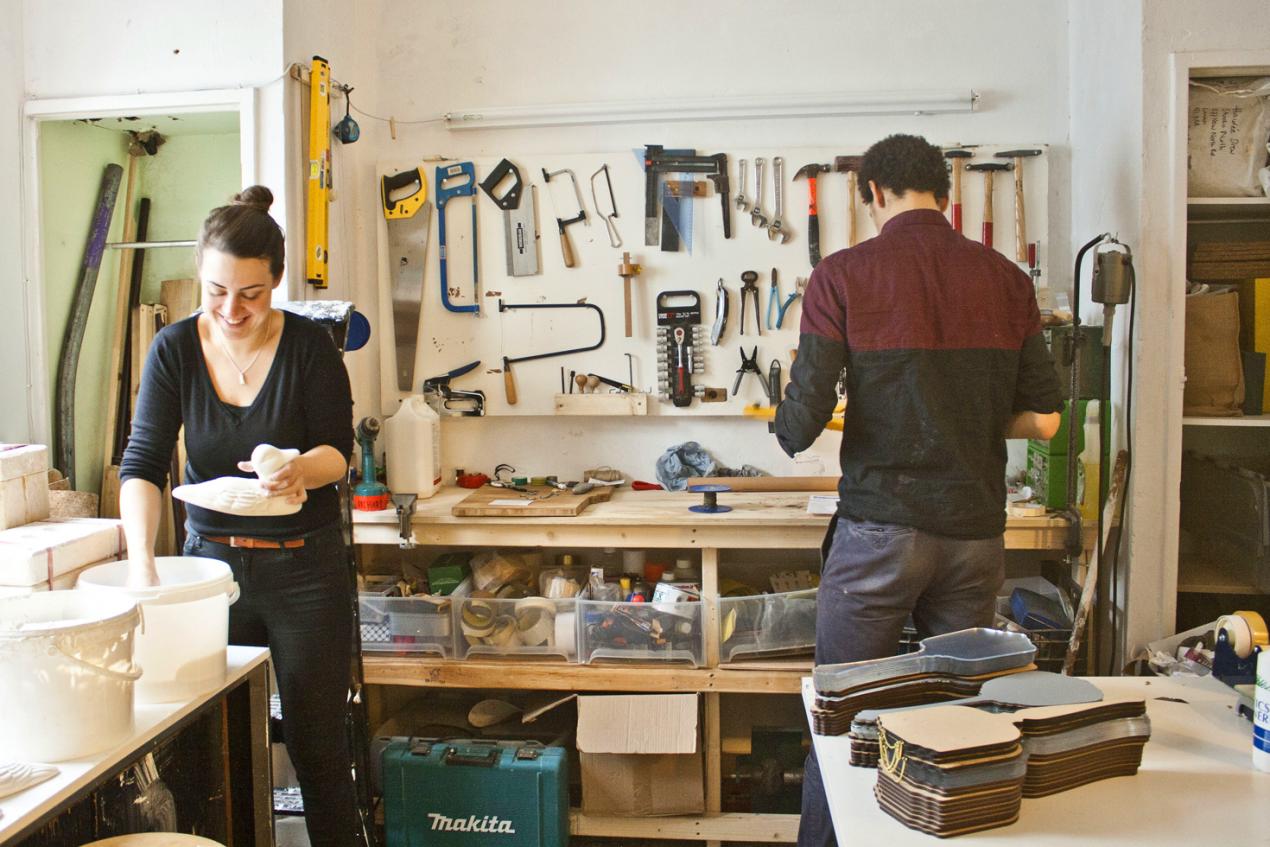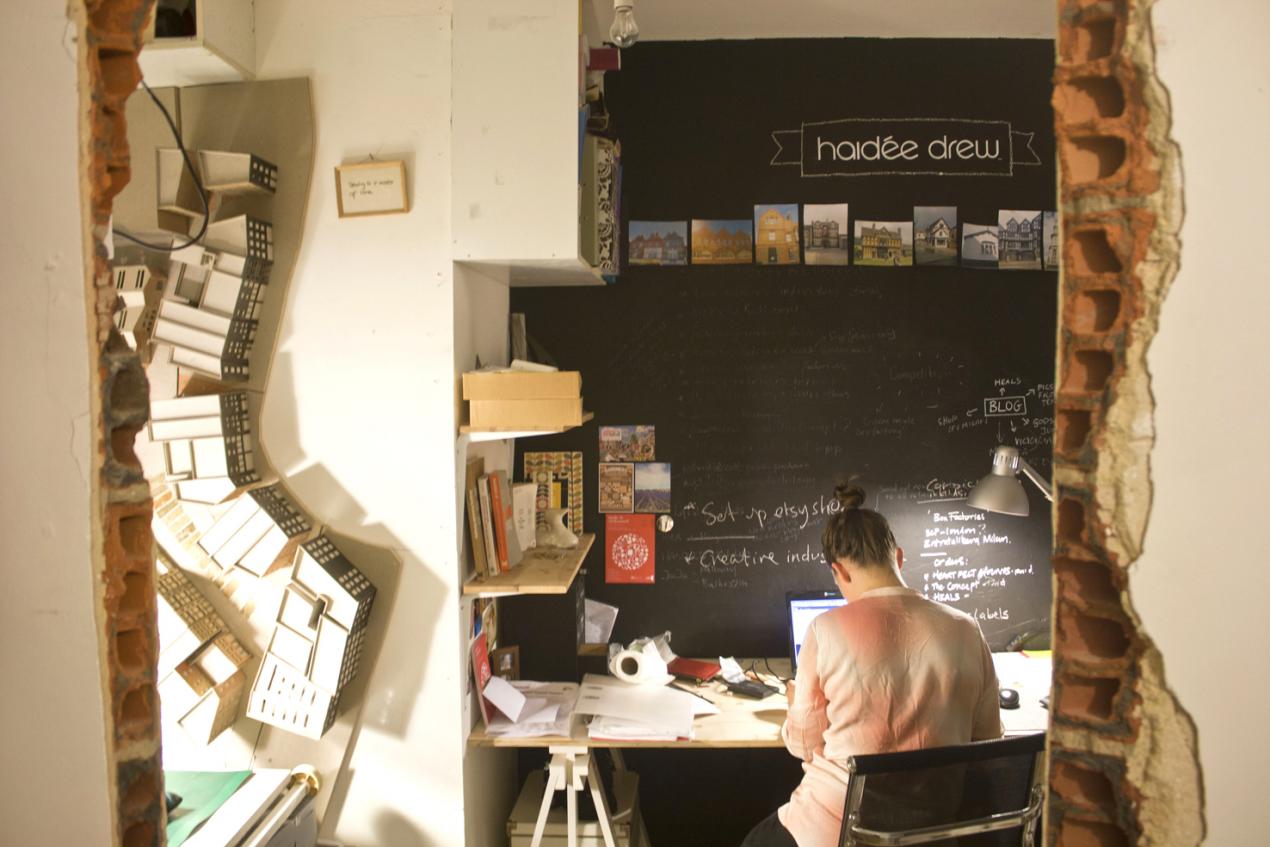Alternatives to the Creative Ghetto

Artists' factory complexes may cater for the young creative graduate demographic, but what happens when young artists out grow these places?
Creative quarters are known to all modern cities, they exist almost temporarily, at the cheaper unexplored fringes. For a moment in time, their vast industrial urban fabric is infested with artist collectives of all disciplines. These transient neighbourhoods act like incubators for the young creative classes, they are informal places, which encourage ideas to be developed and formed.
However, I use the derogatory term ‘ghetto’ for a reason; because although they are formative collective environments for budding careers, they can be also dysfunctional and chaotic.
These neighbourhoods grow quickly without any coherent planning in terms of use, which makes them noisy and disruptive. They are crammed with a mono cultural demographic which is 20-30 and childless. Their existence is clandestine; landlords encourage artists to live in their studios illegally in high numbers, without appropriate rights and provisions.
This may be OK for the young and the transient, but what happens when you grow out of the ‘ghetto’? What are the alternatives for flourishing creative practitioners?
 Hackney Wick and Fish Island in East London, or 'The Wick' as it is locally known, is the quintessential creative neighbourhood. It is where my partner, designer Haidée Drew, and I have spent almost half a decade, living and working in collective warehouse studios.
Hackney Wick and Fish Island in East London, or 'The Wick' as it is locally known, is the quintessential creative neighbourhood. It is where my partner, designer Haidée Drew, and I have spent almost half a decade, living and working in collective warehouse studios.
We occupied a shared live work unit with over 10 others, with whom we collectively managed a 3000 sq. ft. factory space as a shared home, workshop and events space. In my studio there, I began developing my architectural design practice, and my partner Haidée grew a creative business designing and manufacturing products from the ground floor studio. The cheap and spacious environment served its purpose well: it gave us all space and time to develop our ideas into growing practices or businesses. It is an environment which is great for its collective creativity and support, it gives space for experimentation and testing, and its live-work configuration is well suited for emerging practitioners who need to be immersed in their work.
However, for many who begin to find success in their practice, the strain of the collective environment, inevitably brings a thirst for stability and direction. When a business is taking off and requires more energy, it inevitably becomes time to seek alternative arrangements.
But where else can one get affordable live-work space fit for purpose?
In our case, we needed affordable workspace as well as housing for a couple within East London, which is our stomping ground, where our networks are based.
We had two options:
Firstly we could find a smaller warehouse space, sized for a couple to live and work in, but this is problematic because it would still be in the noisy ‘ghetto’, with the same careless landlords. It would also require a lot of self-build work, which is costly and time consuming.
Secondly, we could rent a normal house, and then separately rent a ‘work only’ studio space elsewhere. This would probably be a healthy solution for good live-work separation, but it is very costly, because it means two sets of rents and rates, as well as time spent travelling from one to other. This option may be the ultimate end game, but like many others, we just can’t afford it.
Fortunately, our alternative came in the form of a live-work scheme managed by a charitable arts studio provider, Bow Arts Trust. This Studio provider in partnership with a housing association, offers short tenancies on flats which will be demolished in the coming years, bringing in artists as a ‘meanwhile use’ to take these flats as live work homes. Artists protect the property from squatters, as well as generate income. The trust has created a network of artists in properties all over Poplar.
The deal is perfect for people in our position because it offers cheap space sized for singles and couples, in an ordinary, relatively quiet mixed-use neighbourhood. The artists on the network, selected for the scheme, all seem to be serious and proactive, no riff raff. This is because to be eligible for the scheme, artists must demonstrate their need for studio space, and their willingness to be part of a community.


 We have been given a 1960’s two bed flat in a three storey social housing block in Poplar, on an estate filled with families waiting to be re-housed. The neighbourhood couldn’t be more of a contrast from The Wick: it is quiet, multi-generational, domesticated and green. The presence of family life feels like a novelty.
We have been given a 1960’s two bed flat in a three storey social housing block in Poplar, on an estate filled with families waiting to be re-housed. The neighbourhood couldn’t be more of a contrast from The Wick: it is quiet, multi-generational, domesticated and green. The presence of family life feels like a novelty.
The house is made of sturdy concrete, and given its condemned nature, we were free to make adjustments and self build as we pleased.
We gave careful consideration as to how we would adapt the council flat into a live work studio fit for our needs and lifestyle. This involved making a clear line between the two states of work and live.
We knocked out walls, and built new ones to create a range of specific workspaces.
We declared the work area as an official collaborative workspace called 'H&R Studio' incorporating our initials. It is separated from the rest of the house, with its own front door complete with logo.
There are spaces allocated for wood & metal work, ceramics, a large packaging area, as well as an office area for drawing and design.
Amazingly, we pay an even lower rent than before, plus we now have reliable domestic provisions such as full central heating and hot water. There is a feeling of freedom here, as we now exist privately and are able to indulge our time with heightened precision, towards our long-term goals, which like many others, is to sustain our creative practices.
Both the creative neighbourhood of Hackney Wick and the live-work guardian scheme, are transitory moments in the city, which crucially, both offer different levels of incubation for London’s ever emerging creative practitioners. However, they are both operating in the shadow of regeneration, as a stopgap and therefore have a temporary existence.
These vital alternative modes of inhabiting the city are becoming more and more in demand, as the creative industries continue to grow and freelance culture becomes more prevalent. I hope, that through new kinds of relationships between creative industry and urban regeneration, these informal means of creative incubation in the city may become more prevalent.
Richard Brown is the founder of the workspace initiative Affordable Wick. In his recent book Creative Factories of Hackney Wick Fish Island (LLDC, 2013), Richard deduces a set of socio-economic principles for sustaining collectively managed live-work spaces.
